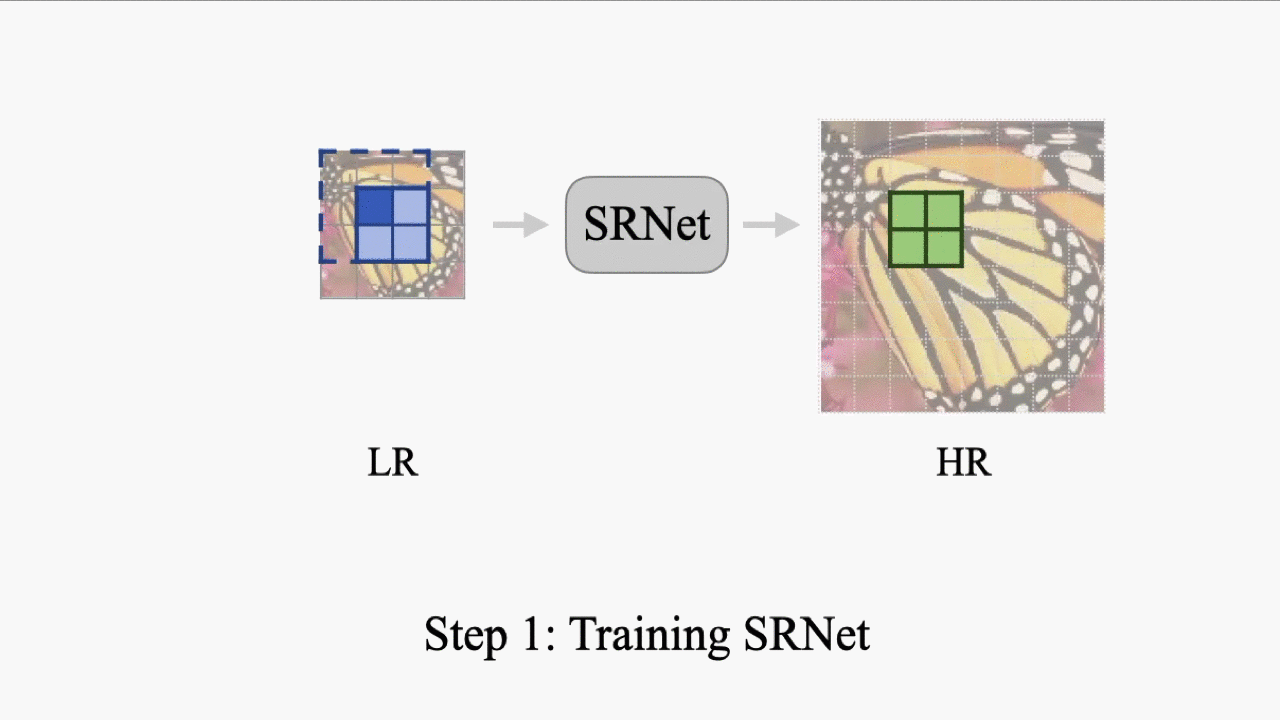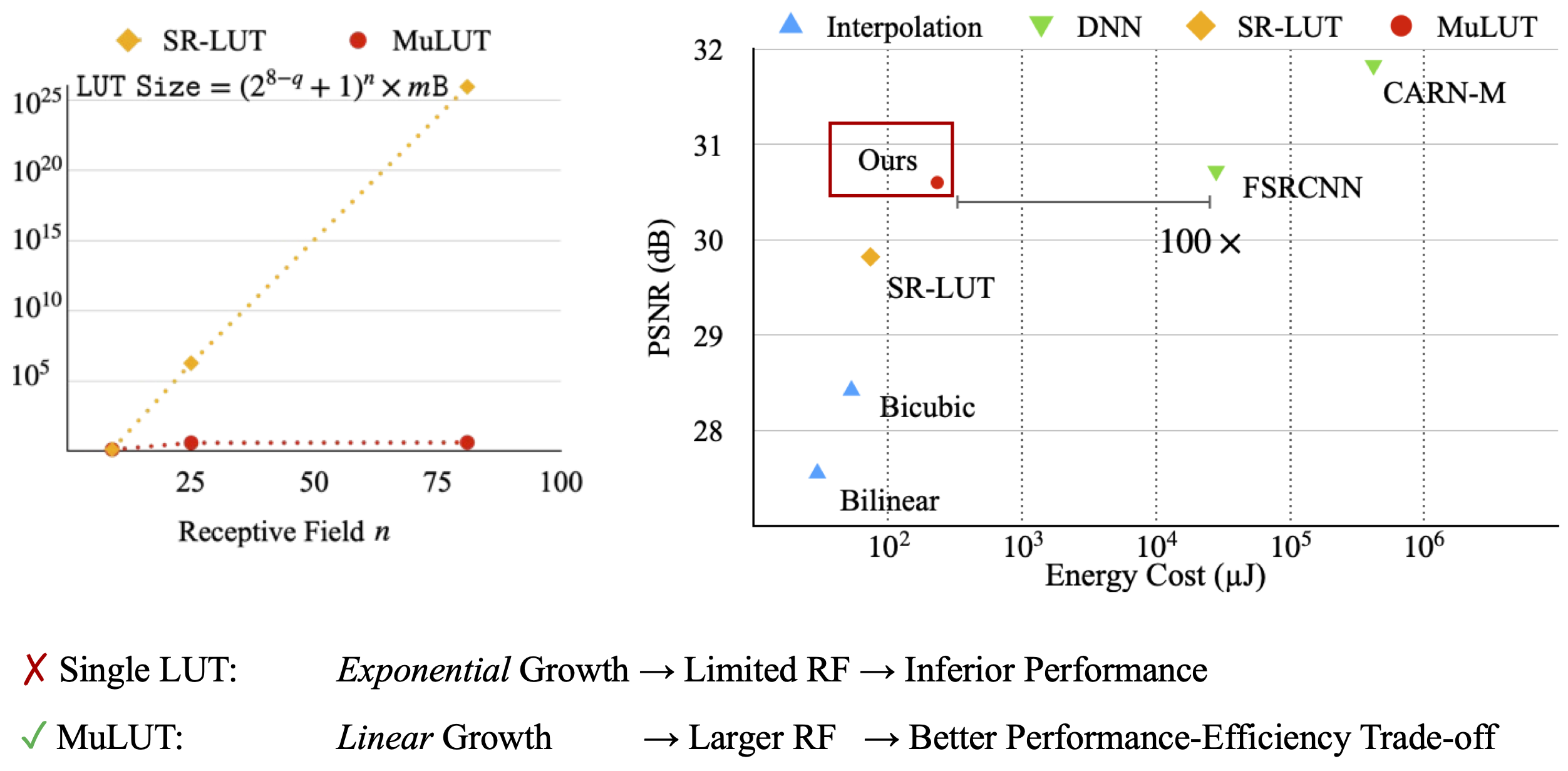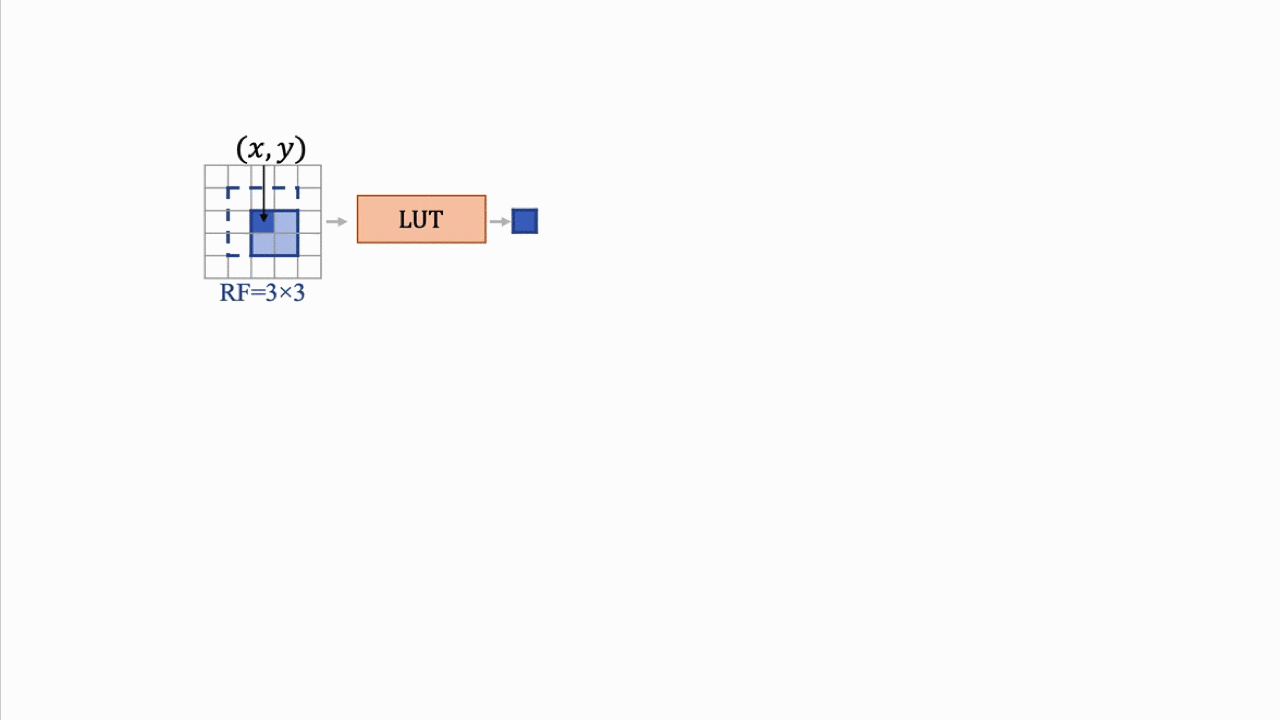Understanding MuLUT
Why MuLUT: SR-LUT and Its Limitation
An SR-LUT is obtained and deployed as the following.
1. Training an SR network on paired LR-HR dataset.
2. Caching the SR network via traversing all possible LR inputs and saving the corresponding HR results, obtainning a list of index-value pairs, i.e., a LUT.
3. Retrieving values from the LUT by querying give LR inputs.
However, due to exhaustive calculation, the size of a LUT grows exponentially as the dimension of its indexing entry increases.
Thus, its receptive field (RF) has to be limited, resulting in inferior performance.


